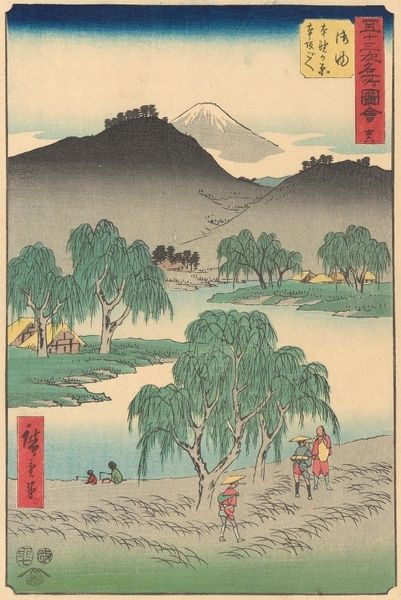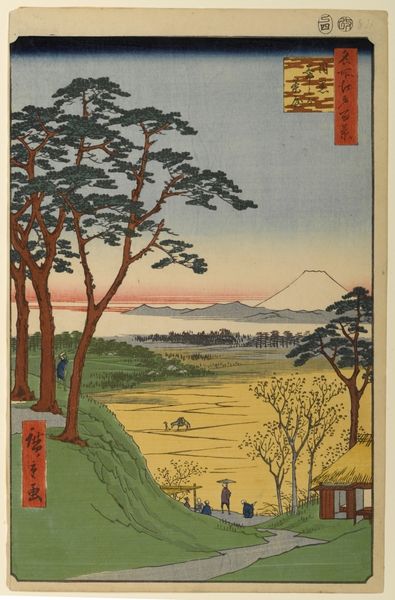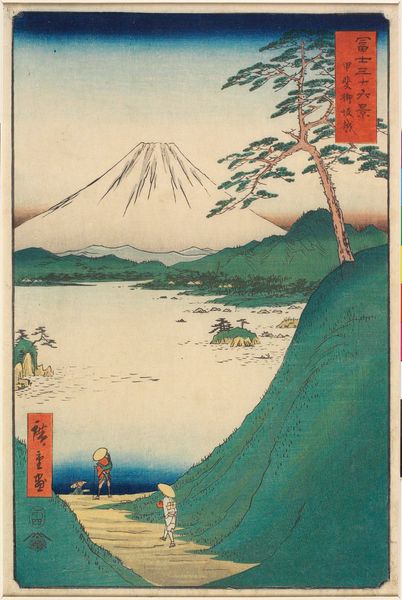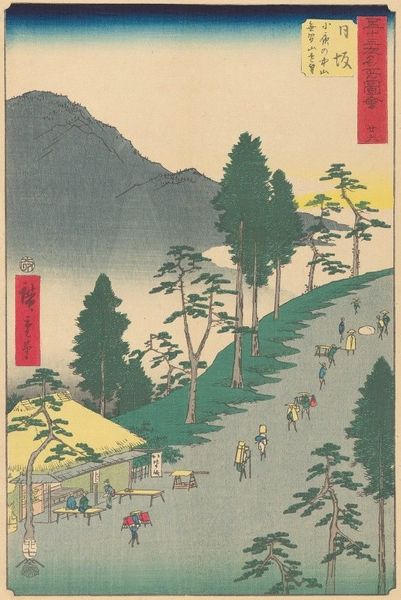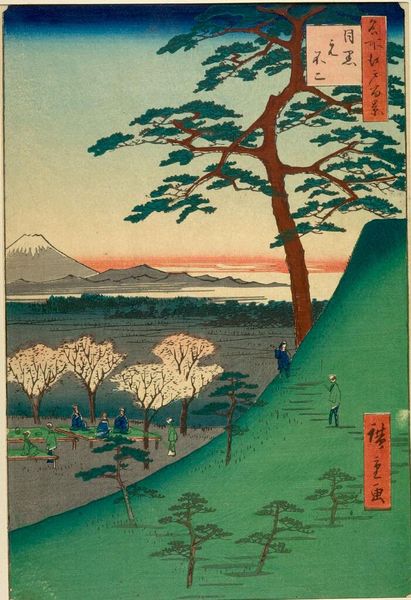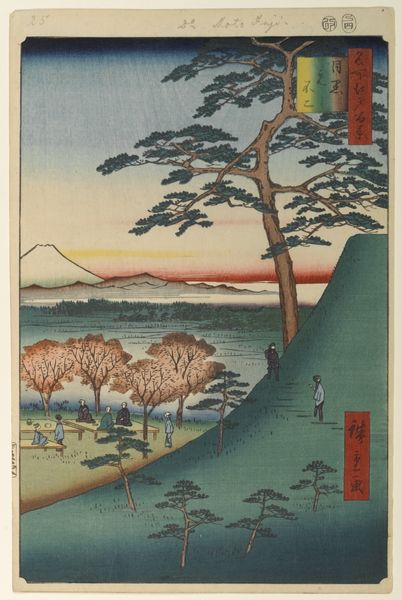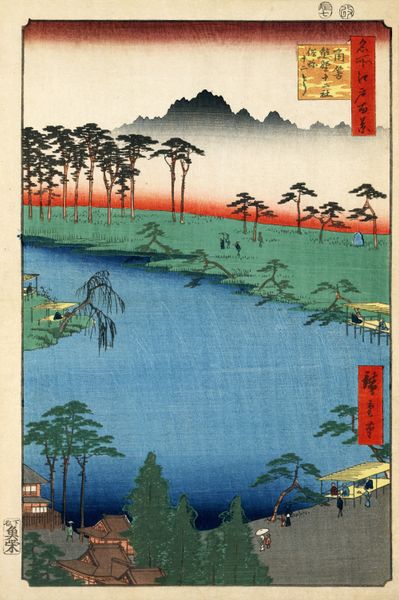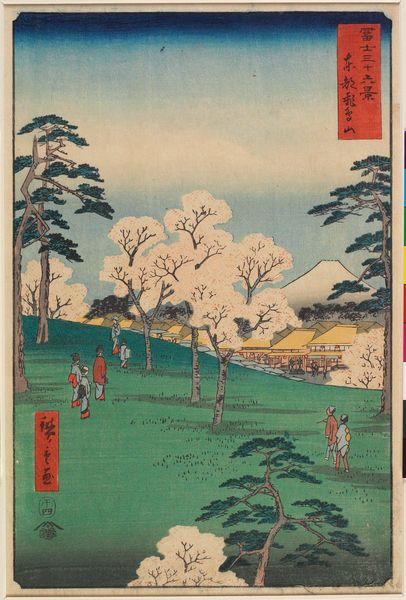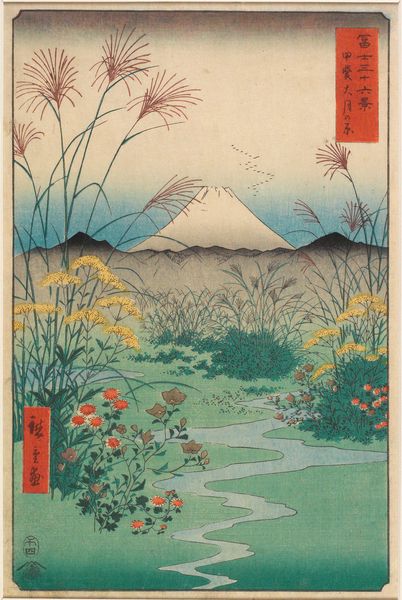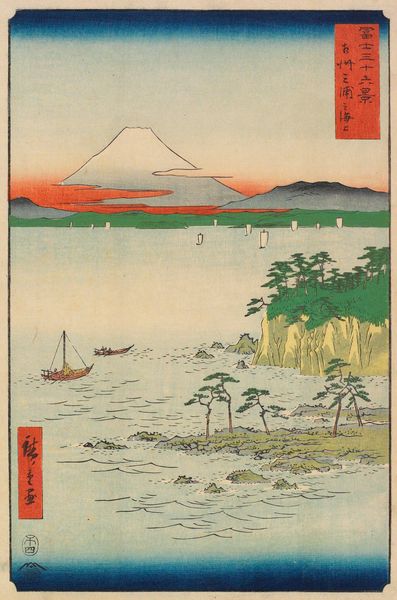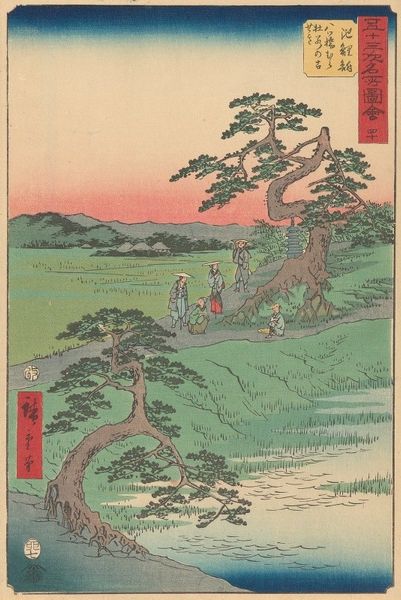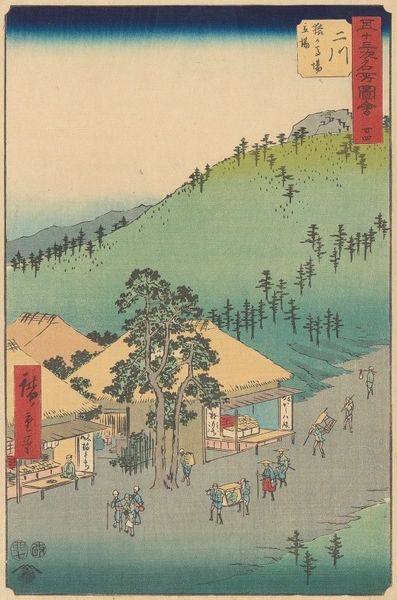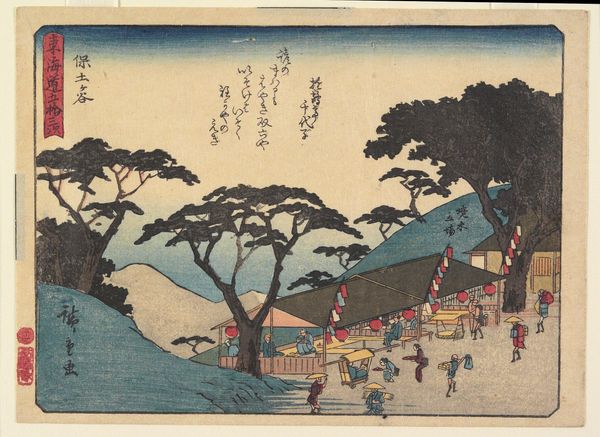
Dimensions: sheet: 37.47 × 25.4 cm (14 3/4 × 10 in.)
Copyright: National Gallery of Art: CC0 1.0
Utagawa Hiroshige made this woodblock print, Fujisawa-shuku, one of a series called Fifty-three Stations of the Tōkaidō. It’s a bird’s eye view of a post station in Japan, a site of both commerce and local color. The scene is populated with travelers, porters and horses. The composition places us amid the hustle of everyday life, a far cry from the elite world of the court. Hiroshige was part of the ukiyo-e movement or ‘pictures of the floating world’ which grew in prominence in the Edo period. This art was largely for and about the merchant classes, and it reflects their tastes and values. Woodblock prints like this one weren’t originally considered ‘high art’ and it’s only through institutional recognition that they’ve come to be so esteemed. What can we learn from the way that the artist represents labor and leisure? What do the landscapes say about attitudes to nature in Japan at this time? By understanding the social and institutional history we can appreciate how this beautiful print was, in its day, a comment on society.
Comments
No comments
Be the first to comment and join the conversation on the ultimate creative platform.

